'Cultural Revolution' shakes up tourism

Yaks graze in a valley near Gongga Mountain, the highest mountain in Southwest China's Sichuan Province. The mountain is visited by tourists retracing a journey by British botanist Ernest Henry Wilson, who studied thousands of native plants during the early 20th century. Photo: Courtesy of Sichuan Pangolinetour
Spending a sunny October afternoon wandering around Park Güell in Barcelona, Spain, Ren Xinyan found herself stepping into a world of shining porcelain. Surrounded by delicate porcelain works, she recalled feeling "dizzy with happiness."
Street lamps, benches and handrails were all decorated with elaborate porcelain. Sunshine glimmered off porcelain statues, leading Ren to gain a sense of what Spanish architect Antoni Gaudí had in mind when he designed the park more than a century ago. "I just could not stop being amazed," recalled Ren, a 27-year-old costume designer.
In-depth experience
It's easy to gain the perception from media reports in recent years that Chinese tourists care less about culture than they do about shopping for luxury brands when visiting major European metropolises. Cashed up and eager to spend big, the prevailing stereotype is that Chinese tourists prefer to travel in large tour groups and aren't eager to leave their cultural comfort zone.
But Ren doesn't fall into this category, and neither do a growing number of Chinese tourists fueling the "cultural tourism" boom not just at home but worldwide.
Ren doesn't return home from her travels overseas with handfuls of shopping bags. Instead, she claims to return with something far more valuable: spiritual fulfillment. This sense of satisfaction comes from shunning popular travel hot spots and visiting sites that fill a traveler with the knowledge and cultural enrichment necessary to deliver a spiritual awakening, said Ren.
Ren was inspired to travel to Spain after watching a documentary several years ago about production of porcelain in the country.
Intrigued by its beauty and history, Ren researched online about the best places to visit in Spain to gain a better appreciation and understanding of the ceramic ware.
One of the main sites on her tour was the Valencia headquarters of Lladró, a world-famous porcelain maker that has its own museum displaying porcelain wares of various styles. "I'd heard that [Lladró] have special craftsmen who make porcelain statues' faces and flower petals," she said.
Ren's Spain trip provided her with fresh inspiration for her work as a costume designer. Now, she is planning her next trip in 2014 to Fengtian in Taiwan to savor the culture of jadewares.
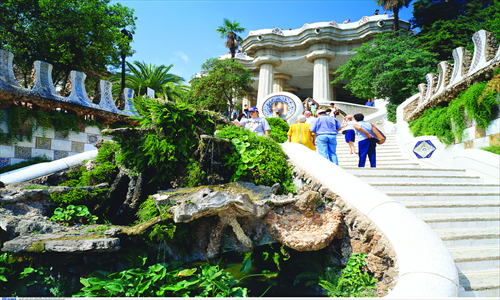
Park Güell, a UNESCO World Heritage Site famed for its porcelain works in Barcelona, Spain. Photo: IC
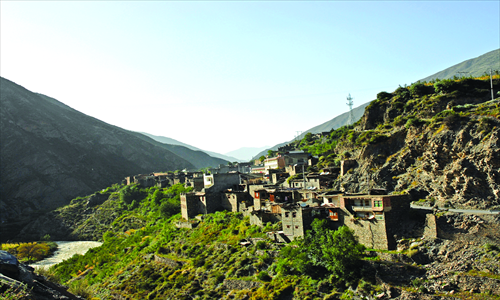
Fortified diaolou buildings home to Tibetan and Qiang people in Aba county, Sichuan Province. Photo: Courtesy of Sichuan Pangolinetour
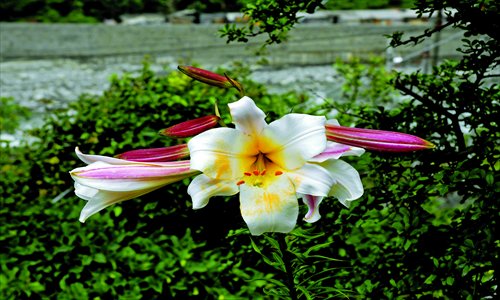
Lilium regale, a flower native to Sichuan that Wilson introduced to the UK in 1903. Photo: Courtesy of Sichuan Pangolinetour
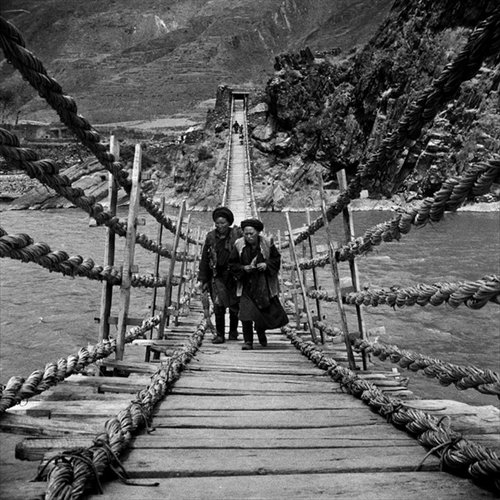
A 1908 photo taken by British botanist Ernest Henry Wilson of Tibetan pilgrims on a bridge in Wenchuan county, Sichuan Province. Photo: Courtesy of Sichuan Pangolinetour
Following in history's footstepsSichuan Pangolinetour is a travel agency based in Chengdu that specializes in organizing culture-oriented travel itineraries in Southwest China. In 2011, it launched a route dubbed "Trace Wilson's Journey" that was jointly promoted by ctrip.com, a tourism website in China.
The route follows in the footsteps of British botanist Ernest Henry Wilson, who traveled around China between 1899 and 1911 to collect and study plants. In total he took 65,000 herbariums and more than 1,500 kinds of plant seeds to the West from China.
Wilson was also a photographer, taking more than 1,000 photos of plants, animals and people to capture a 20th century snapshot of Chinese society.
Bian Li, a travel agent at Sichuan Pangolinetour, said among the first modern travelers retracing Wilson's route were professors and researchers of botany and environmental sciences in 2011.
Their aim was to visit landmarks photographed by Wilson to contrast the changes of Southwest China over the span of a century.
The route has boomed in popularity since its inception, with 14 tours accounting for around 100 travelers booked through Sichuan Pangolinetour. The majority of these tourists have been from overseas.
Many of these travelers, who hail from both home and abroad, are admirers of Wilson or just eager to enjoy the rugged scenery of Southwest China, said Bian.
"It is a great opportunity for every traveler to appreciate the beauty of Sichuan," said Bian. "We have arranged many different routes for travelers and modified the original route taken by Wilson, which could be a little tiring or boring for some modern travelers."
The "Trace Wilson's Journey" route begins in Chengdu. The first notable site is Yunfeng Temple, which has a history of more than 1,000 years, in the city of Ya'an in western Sichuan. Within the temple grounds are two nanmu trees more than 1,200 years old.
"No one can resist being mazed by Mother Nature and the beauty of botany," said Bian.
On day two, travelers appreciate dove trees native to Southwest China that inspired Wilson's first visit to the country in 1899.
The travel agency also includes other attractions, such as gourmet and handcraft experiences to this botanic culture journey.
Bian said tourists can enjoy food of Xingjing county, such as tata noodles, bangbang chicken and shunjiang meat dumplings.
In Gucheng village, a couple of kilometers from Xingjing county, tourists can also experience the traditional way of making claywares, a craft that has a history dating back 2,000 years.
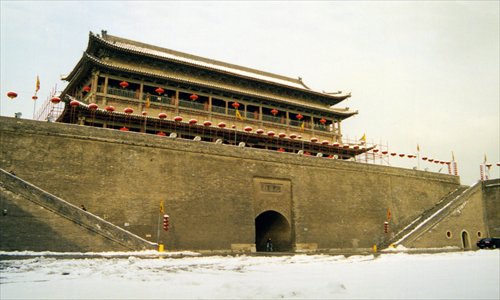
Yongding Gate in Xi'an, Shaanxi Province, dates back to the Sui Dynasty (581-618). Photo: CFP
Not always meeting high hopes
Li Mingde, deputy director of the Tourism Research Center at the Chinese Academy of Social Sciences, said the development of cultural tourism shows that an increasing number of travelers want to connect on a deeper level with the sights and landmarks they visit.
"If one is interested in [ancient Chinese poet] Li Bai or [French poet] Victor Hugo and this interest is matched with tourism, one can retrace their travels or find proof of their presence by pursuing in-depth cultural experiences. People do this because they are familiar with what they like and want to gain a better understanding," said Li.
"There are also many people who travel to gain knowledge as part of a greater pursuit of self-improvement. Travelers might be curious about certain fields and research the routes of famous expeditions. Everywhere has its own unique culture."
However, sometimes tourists have high expectations that aren't satisfied by trips arranged by cultural tourism travel agencies.
Li Yuanting, a 19-year-old university student at Beijing Normal University, visited Xi'an, Shaanxi Province, for the first time in October to explore its Tang Dynasty (618-907) heritage.
"I used to fantasize about the glory age of the Tang Dynasty when I was studying history at high school. But when I went to Xi'an, I found everything was different to how I imagined," Li said of the city, which is home to the famed Terracotta Warriors.
"There were too many people at almost every place of interest. People would push me aside to take photos of relics, most of which were restored," she said.
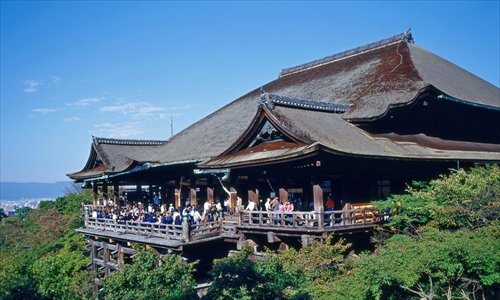
Kiyomizu Temple in Kyoto, Japan, was among sites Fan Yang visited last year to admire wooden architecture structures. Photo: CFP
Fan Yang, an independent travel consultant, organized a tour of ancient wooden architectures in Kyoto, Japan. Despite having lofty expectations, the trip failed to be as memorable as Fan hoped.
"The tourists were so-called scholars [on the tour], but they showed no respect. All they did was bargain with venders and touch exhibits without permission. I don't think they achieved any sense of spiritual fulfillment. It was just like being a part of an ordinary tour group," Fan said.
But Fan is still interested in the development of cultural tourism, especially for tours retracing famous routes. Fan said that more culture-oriented tours need to be promoted to high-end travelers before the sector can experience overall growth.